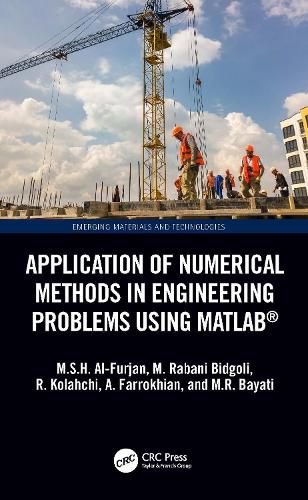Readings Newsletter
Become a Readings Member to make your shopping experience even easier.
Sign in or sign up for free!
You’re not far away from qualifying for FREE standard shipping within Australia
You’ve qualified for FREE standard shipping within Australia
The cart is loading…






Application of Numerical Methods in Engineering Problems Using MATLAB (R) presents an analysis of structures using numerical methods and mathematical modeling. This structural analysis also includes beam, plate, and pipe elements, and examines deflection and frequency or buckling loads. The various engineering theories of beams/plates/shells are comprehensively presented, and the relationships between stress and strain, and the governing equations of the structure are extracted. To solve governing equations with numerical methods, there are two general types, including methods based on derivatives or integrals. Derivative-based methods have the advantage of flexibility in modeling boundary conditions, low analysis time, and a very high degree of accuracy. Therefore, the book explains numerical methods based on derivatives, especially the differential quadrature method.
Features:
Examines the application of numerical methods to obtain the deflection, frequency, and buckling loads.
Discusses the application of numerical methods for solving motion equations.
Includes numerous practical and applicable examples throughout.
$9.00 standard shipping within Australia
FREE standard shipping within Australia for orders over $100.00
Express & International shipping calculated at checkout
Application of Numerical Methods in Engineering Problems Using MATLAB (R) presents an analysis of structures using numerical methods and mathematical modeling. This structural analysis also includes beam, plate, and pipe elements, and examines deflection and frequency or buckling loads. The various engineering theories of beams/plates/shells are comprehensively presented, and the relationships between stress and strain, and the governing equations of the structure are extracted. To solve governing equations with numerical methods, there are two general types, including methods based on derivatives or integrals. Derivative-based methods have the advantage of flexibility in modeling boundary conditions, low analysis time, and a very high degree of accuracy. Therefore, the book explains numerical methods based on derivatives, especially the differential quadrature method.
Features:
Examines the application of numerical methods to obtain the deflection, frequency, and buckling loads.
Discusses the application of numerical methods for solving motion equations.
Includes numerous practical and applicable examples throughout.